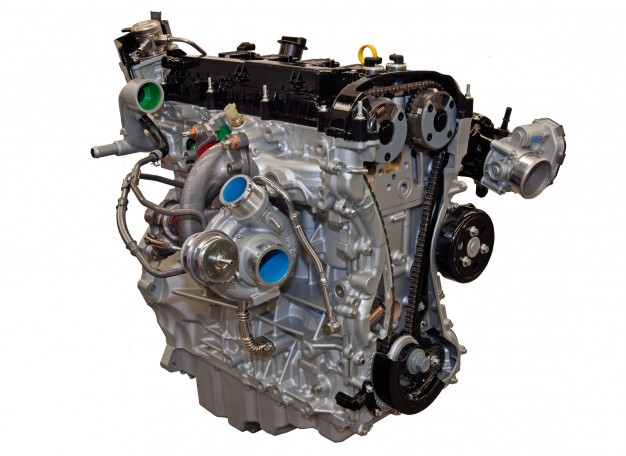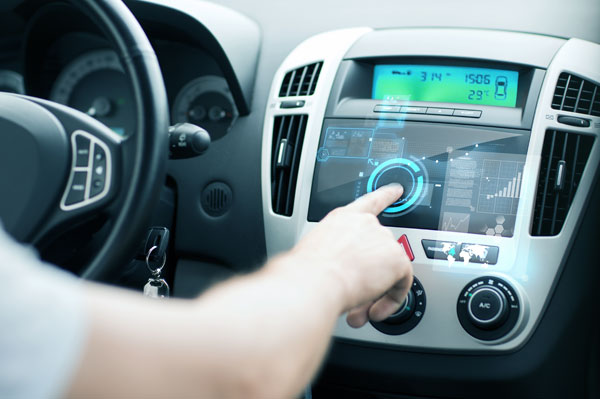For 2014, Formula One is ripping up the current rulebook, and introducing some revolutionary changes designed to really shake up the sport.
Whilst there are new rules covering the chassis and fuel consumption, the biggest change (in our book at least!) lies with the engine. Next year, they’re ditching the naturally aspirated V8s, and replacing them with a smaller, turbocharged V6.
In this post, we take a closer look at the changes to the 2014 F1 engine, before analysing why they’ve done it, and giving our predictions about performance, standings and competition for the year ahead.
The changes
The existing, naturally aspirated V8 engines used in F1 are 2.4 litres, producing around 780bhp.
Whilst we don’t have full details yet, the new generation of turbocharged engines are 1.6litre V6s, and estimates are suggesting that they will produce in excess of 620bhp.
Whilst this might seem like a big drop in power from last year, it doesn’t tell the whole story. These turbocharged engines will be supported by a new ERS (energy recovery system), comprising two electric engines designed to recover energy from the brakes, and recover excess energy from the turbocharge.
This additional electrical power will then be stored in batteries, ready for the drivers to use – boosting the power of the engines significantly to somewhere well above the 800bhp mark. It works in a similar way to the KERS system that’s been so important to F1 over the past few years, but with twice the power, and 10 times the capacity.
To reflect these changes, and emphasise the importance that energy recovery to the new F1 vehicle, these new engines are now going to be known as ‘Power Trains’.
Why turbocharged?
Formula 1 has always tried to lead the way when it comes to engine technology – and the move towards turbocharging is representative of the direction of the wider automotive market.
As more and more mainstream passenger vehicles are being manufactured with turbochargers, it was a natural step for F1 to get involved and to try and push the boundaries of turbo technology.
In addition, as part of the new rule changes, there are a couple of new fuel restrictions, designed to force teams to push towards creating much more efficient vehicles.
By bringing in a smaller, turbocharged engine, F1 vehicles will be up to 40% more efficient than in previous years, whilst providing very similar performance on the track.
Performance & reliability
So how will the new changes affect the lap times? At this stage, it’s hard to say.
Early predictions suggest that power wise, the engines will be very, similar, so they shouldn’t be much of a factor. The technology used in the engines means that there will be no turbo lag, so acceleration and top speed should be comparable.
Other factors will have more of an affect on overall performance. The new chassis design and front wing means that down-force has been reduced, and the cars are around 50 kg heavier. In addition, there has been no announcement on tires as of yet, which will have an affect on lap times.
Overall, we expect lap times to be slightly slower – around 3 seconds at the start of the season, reducing to 1.5/2 seconds by the end of the year, as teams get more out of the technology.
As it’s the first year for the new rules, engines and ERS technology, we expect there to be a few hiccups, and we wouldn’t be surprised if reliability was a little suspect – especially during the first few races.
Race standings
Forget everything you think you know about the competitiveness of Formula 1 teams – things are definitely going to be shaken up by the new engines. Ferrari, Mercedes and Renault will be providing all the engines for the 2014 season.
In theory at least, race standings will depend on which manufacturer makes best use of the new technology, and in that respect, Mercedes and Ferrari definitely have a good head start, as all of the other teams have to buy their engines in!
However, Renault have done a fantastic job for Red Bull over the past 4 years, and it would be foolish to write them off just yet.
Whatever happens, you should expect the unexpected, and 2014 could be the most exciting year in F1 for a generation – we can’t wait!
AET & Formula 1
At AET, we’ve got close links to F1 turbocharging – our founder, Tony Taylor, actually helped Ferrari, Cosworth and MATRA to test turbos in the late 1960s – 10 years before they were first introduced into the sport.
You don’t need an F1 car to come to us for help though – our friendly, expert team members are here to help with all kinds of turbo repairs and replacements, so call us to discuss your requirements today on 01924 588 266.



